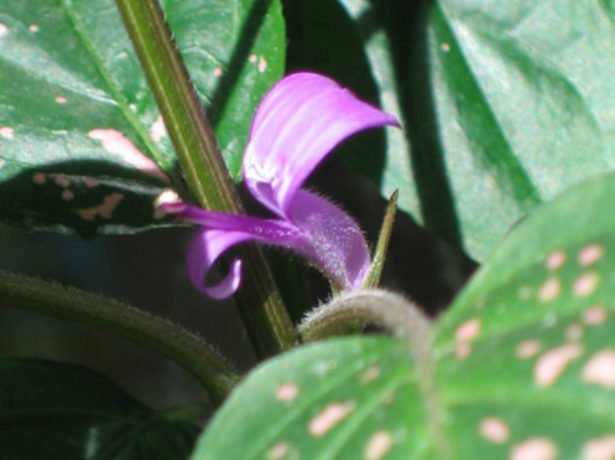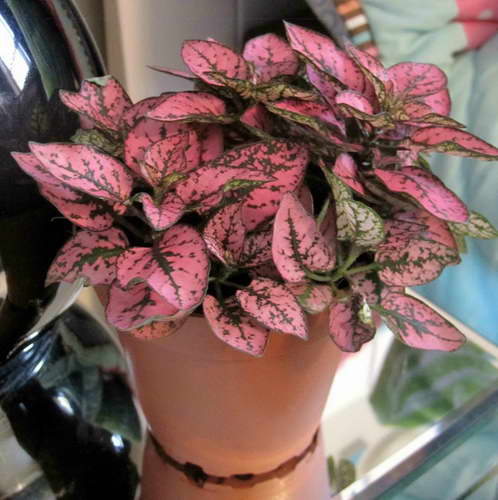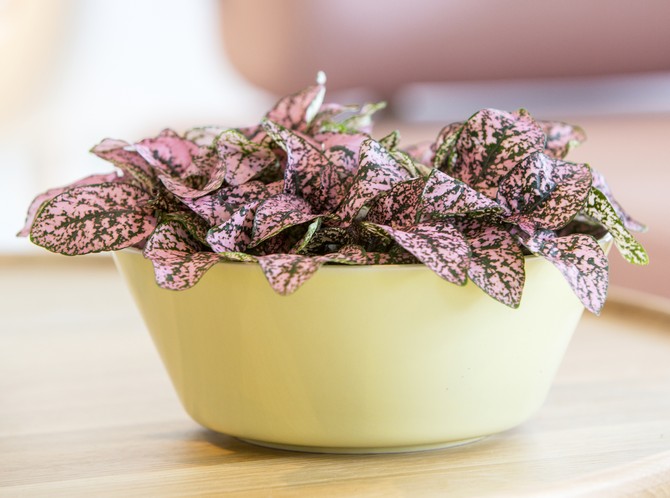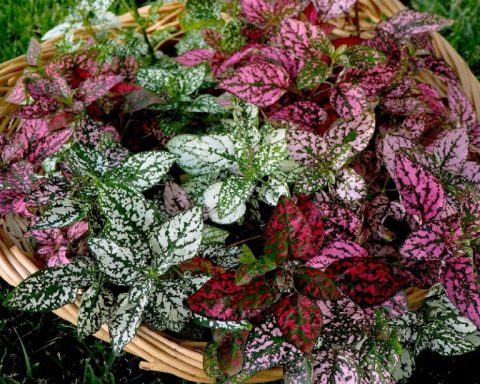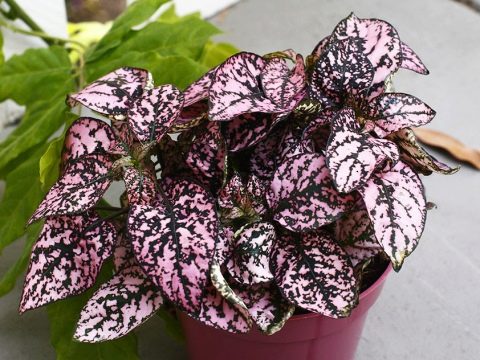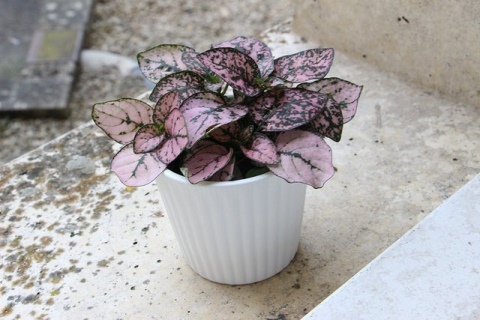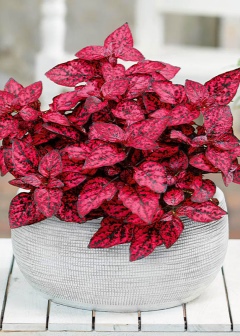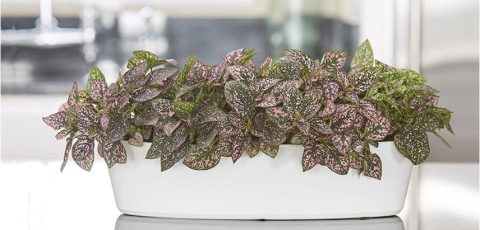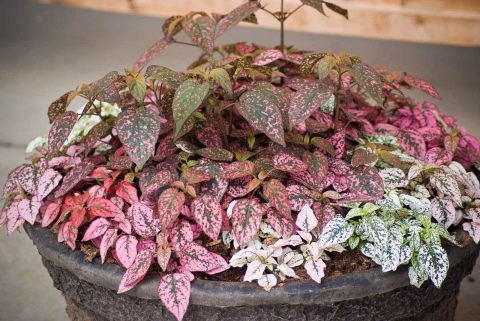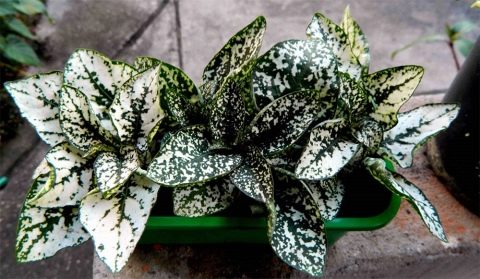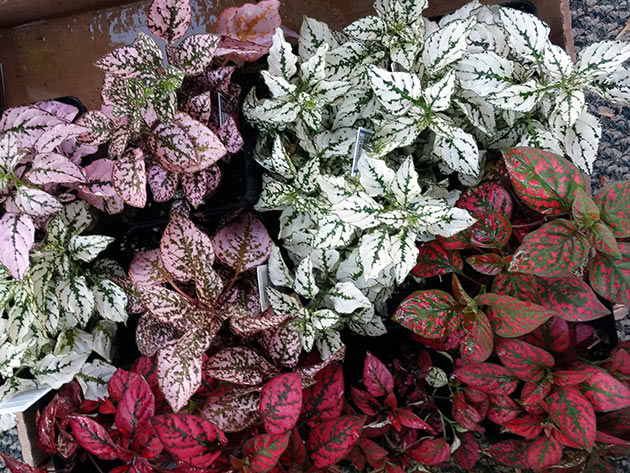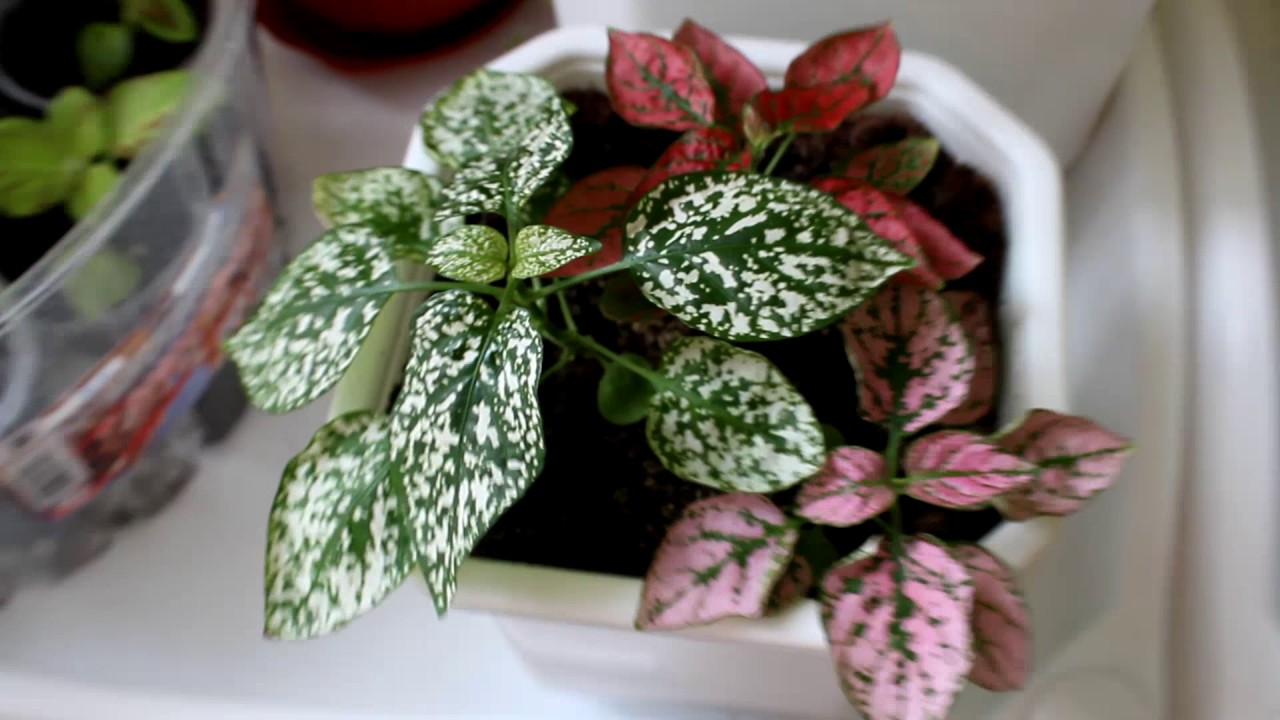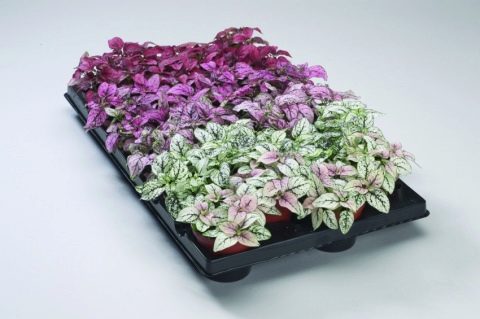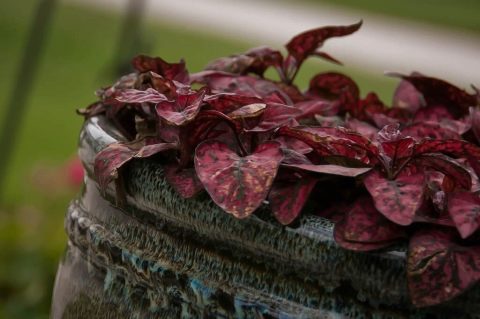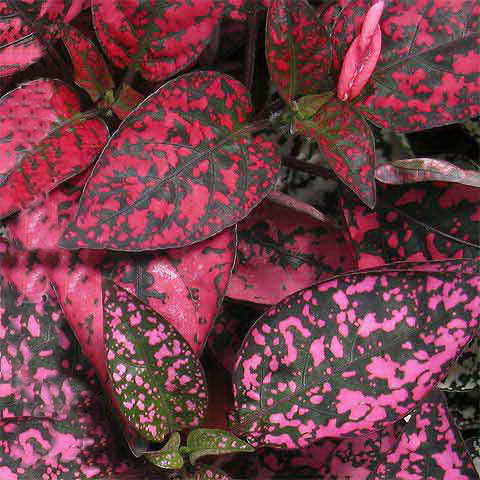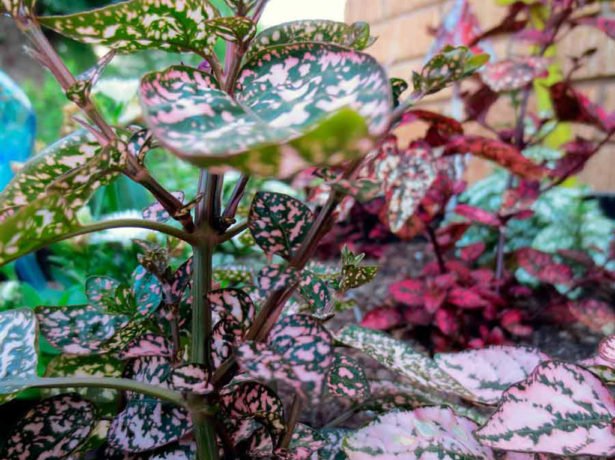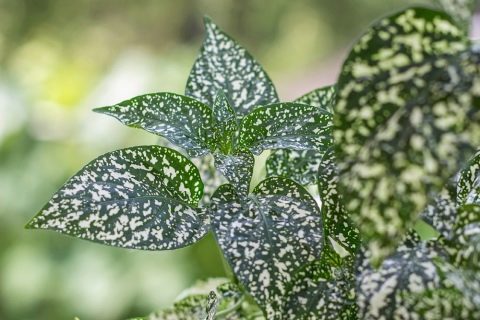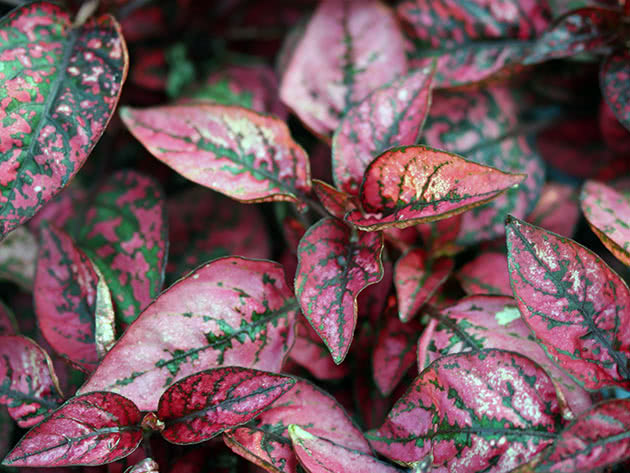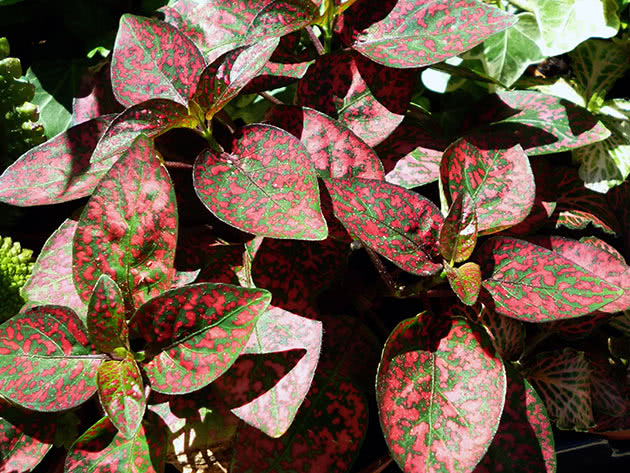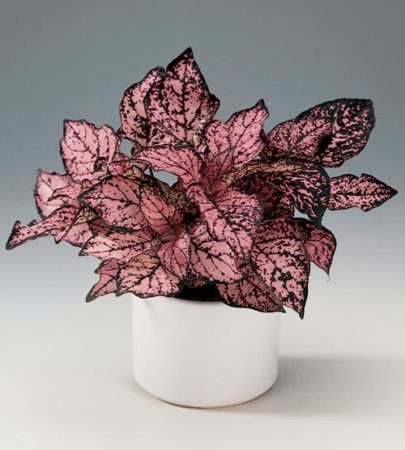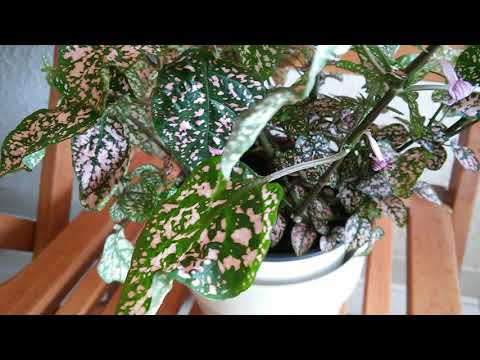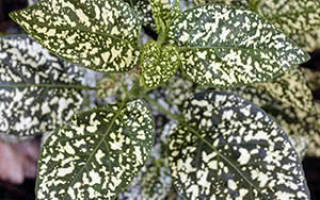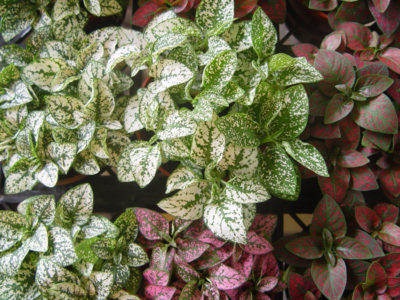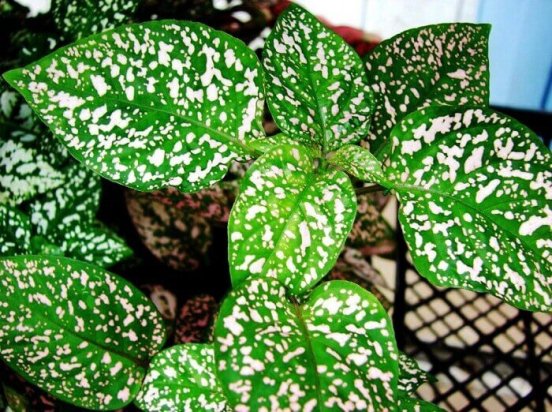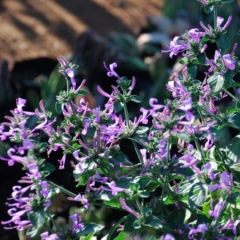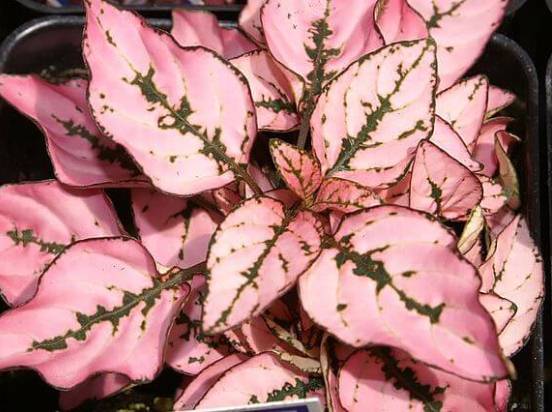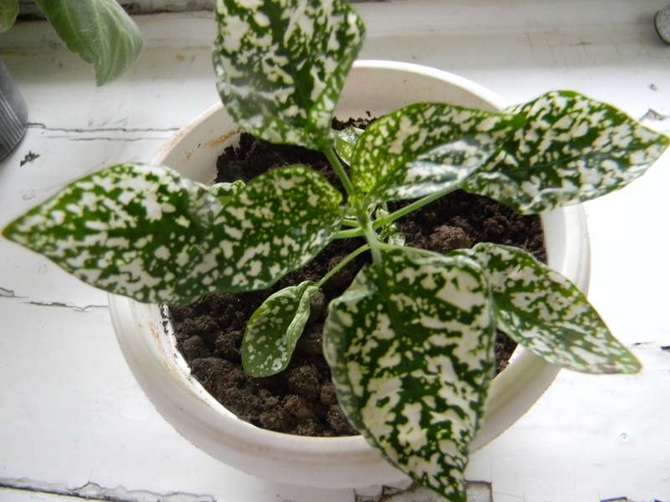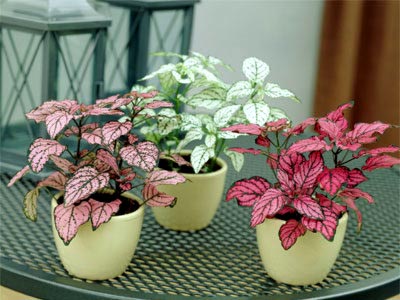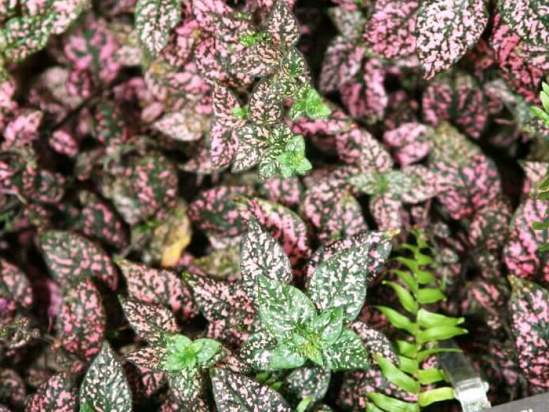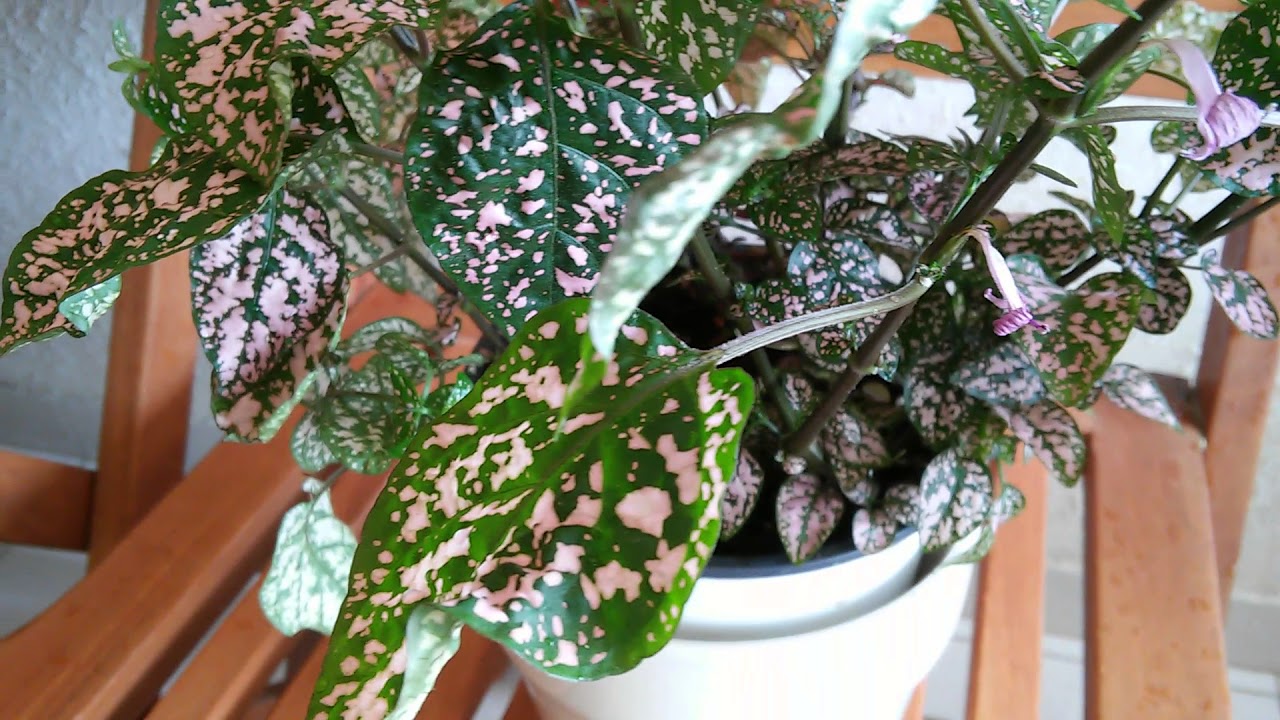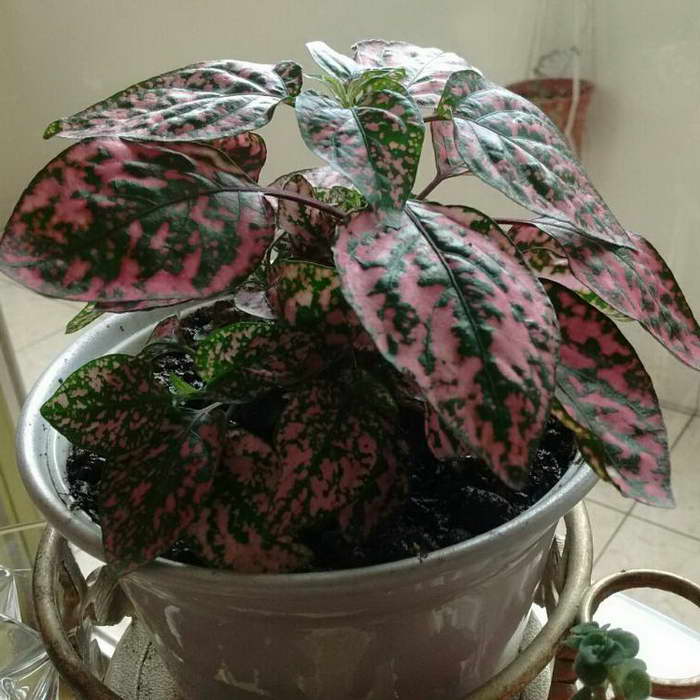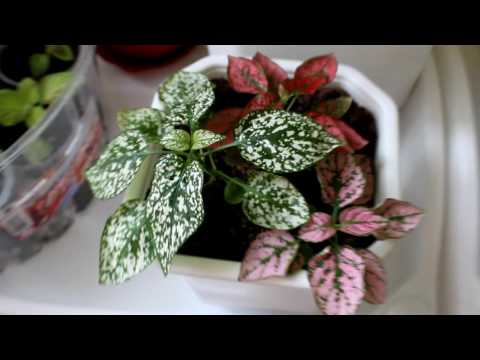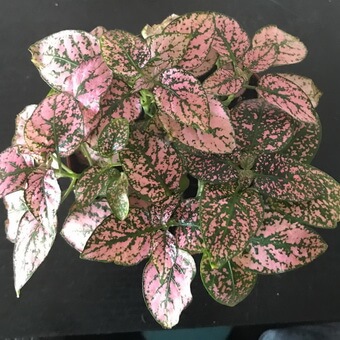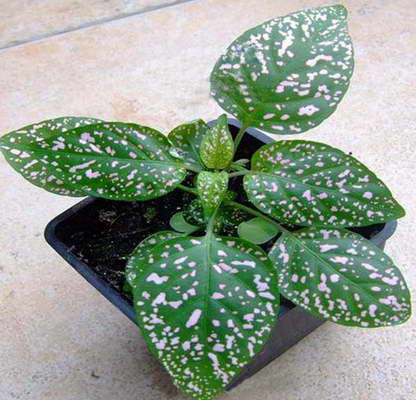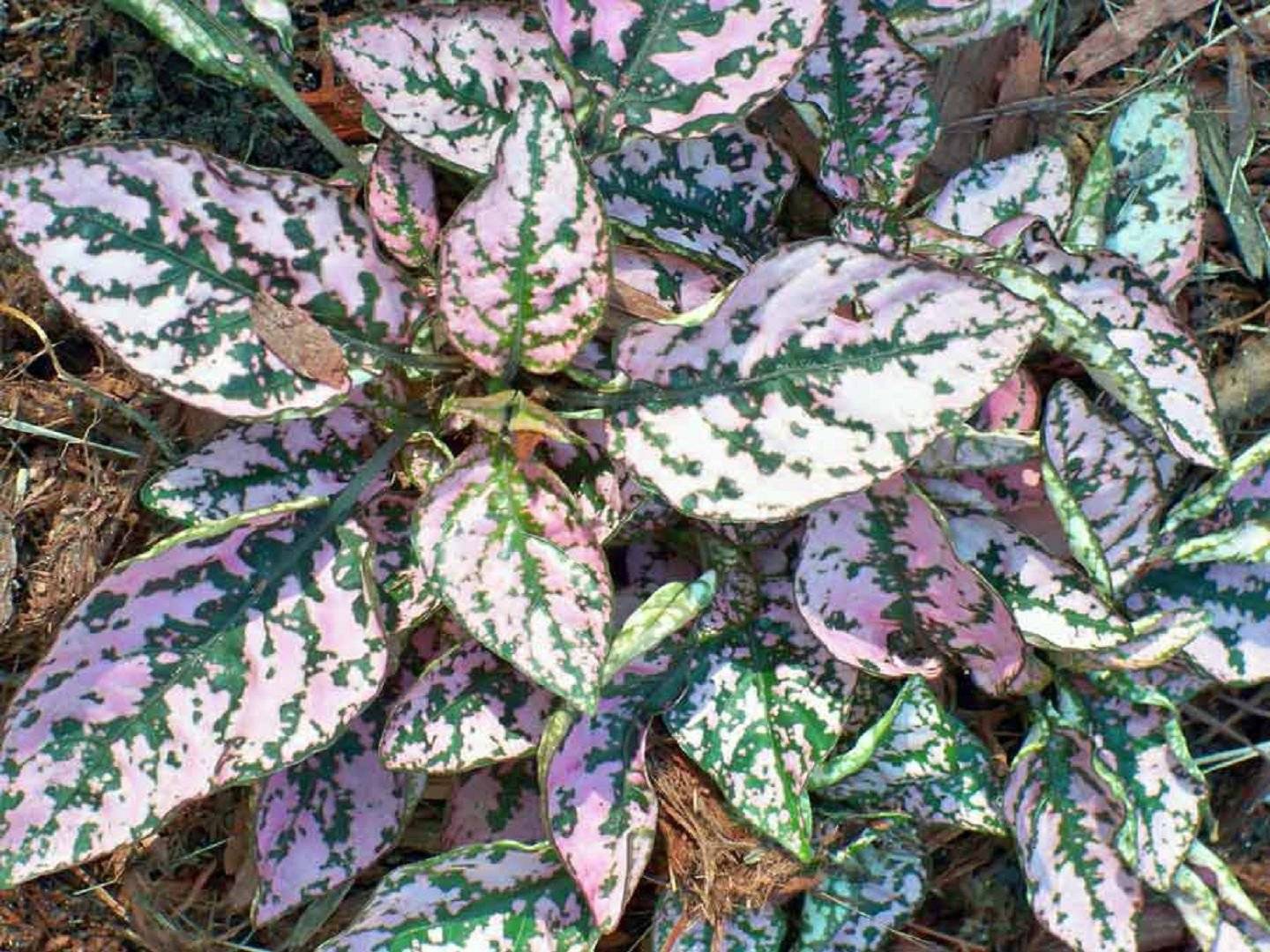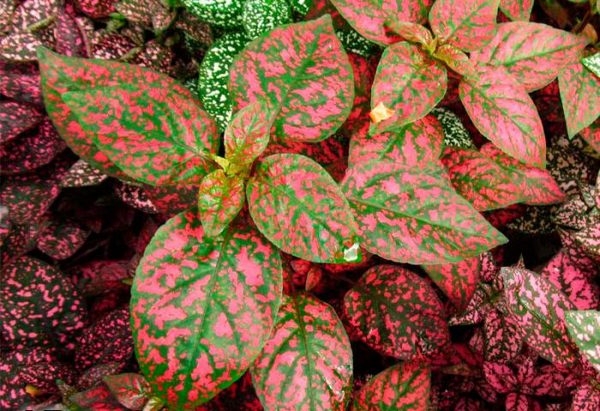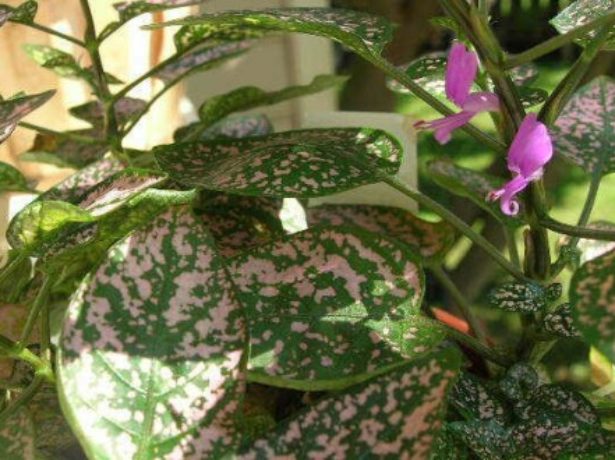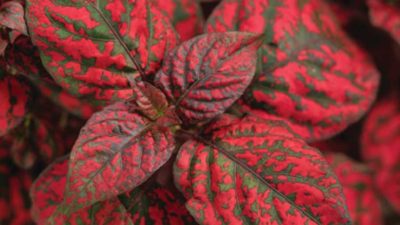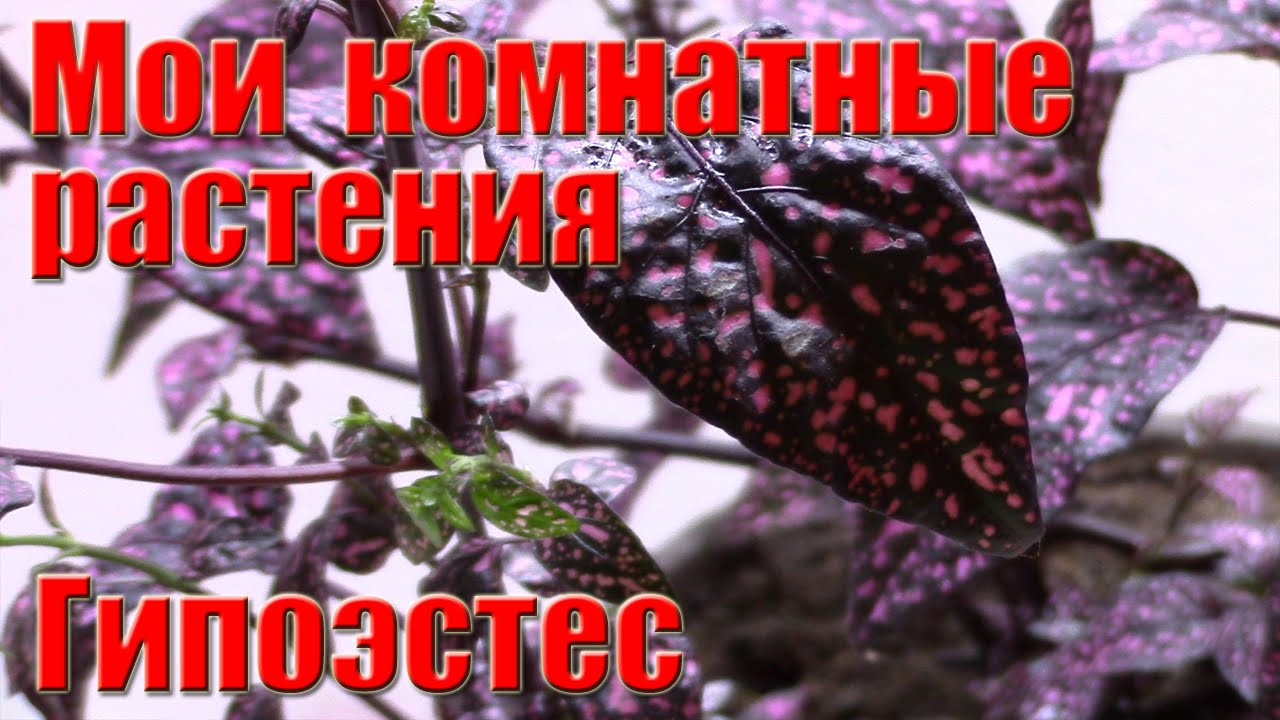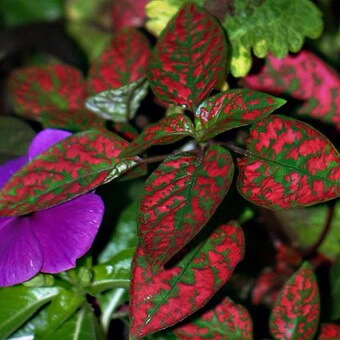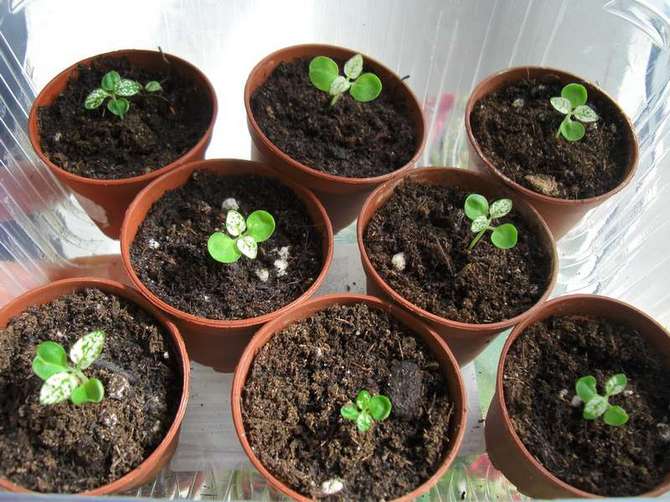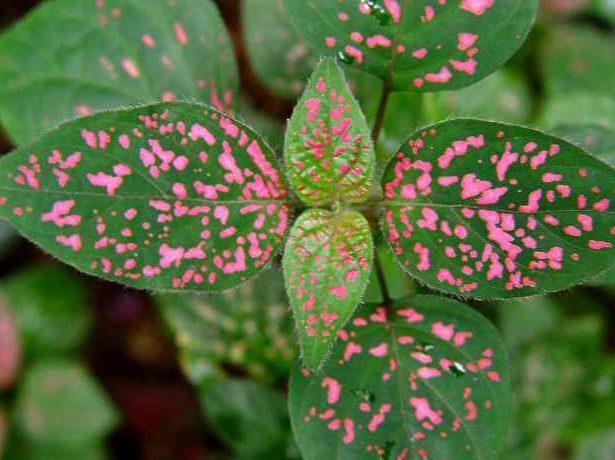Growing problems
In the process of growing an ornamental shrub, certain difficulties can arise. Most often, we are talking about the following points.
Shedding leaves
The culture begins to actively shed its leaves with a lack of moisture, too low temperature or a draft. Making the appropriate adjustments to the care of the plant will easily solve the problem.
Blanching leaves
Blanching of foliage is most often associated with an excess of nitrogen in the soil. A constant exposure to direct sunlight can also cause a problem. The leaves will become bright again if the flower is transplanted into a new suitable soil or rearranged in a place with diffused light.
Drying out the tips of the leaves
Usually, the leaves begin to dry out due to insufficient watering or too low air humidity. Increasing the frequency of watering and daily spraying will resolve the issue.
Falling of the lower leaves
The fall of the lower leaves in most cases is associated with the age of the crop. Perhaps it's time to rejuvenate hypoesthesia.
Pests
Most often, the shrub suffers from an attack by a spider mite or scale insect. Periodic use of insecticides (including for prophylactic purposes) will allow you to forget about harmful insects.
Types of indoor plant hypoesthes: photo and description
Hypoestes is a herbaceous plant up to 60 cm high with ovoid-pointed leaves. The young plant is a beautiful low bush, with regular pinching it does not exceed 30-60 cm in height. Bright, variegated leaves with red, pink or white specks and specks give decorativeness to hypoesthesia. Pale lilac flowers have no decorative value and should be removed.
Hypoestes spikelet (Hypoeates phyllostachya) - a speckled flower or a freckled face - this is a beautiful plant with variegated saturated blotches on the leaves, throwing out peduncles with purple flowers in winter. After flowering, it disappears, so in the spring it is better to replace it with a new plant.
Hypoestes stellaphylla hort. Is a low woody plant with flexible semi-lignified branches. Leaves are thin, like paper, delicate, not pubescent, oppositely arranged. The leaf blade is oval, pointed towards the apex.
Cuttings root well on any substrate. After rooting, they are transplanted into various containers - pots, etc. Due to the numerous spectacular pink spots on the leaves, branching and good foliage, this plant deserves attention and application, especially in ionic culture. Its flowers are inconspicuous, small, blooms in spring.
Hypoestes requires a bright, sunny location. With a lack of light, it does not die, but its numerous pink spots fade and even disappear, which greatly reduces its decorative effect - the plant becomes simply green-leaved.
Leaf hypoestes should be used alone in a ceramic planter, as it is decorated with its beautiful, abundant leaves. The decorative shape of the bush is achieved by timely pinching and pruning.
As shown in the photo, the hypoesthes flower is suitable for landscaping living rooms and public buildings, offices:
All types of hypoesthesia push a person to work, and not just to ordinary work, but to creative work. It stimulates a person to a poetic perception of beauty, to artistic creativity, artistic perception, to the ability to speak beautifully, to present a word beautifully, to beautifully convey beauty itself.
A talented and creative person: poet, writer, musician, actor, sculptor, etc. a person of a creative profession, the choice of plants allows you to notice the beautiful in life and beautiful, correctly convey this beauty, for example, the beauty of nature, the beauty of human relations in the form of poetry, drawing or painting.
A person who does not possess any of the listed artistic talents is prone, under the influence of vibrations of hypoesthesia, to romance, dreaminess. Such a person suddenly wants to read poetry, enjoy a beautiful picture, or, without leaving his apartment in a city high-rise building, just admire the sunset, or maybe the blossoming chestnuts growing along the alley near his house.
A young man in love, under the influence of this elegant plant, will suddenly take, and even compose, poems of his beloved, which he himself will be quite surprised at. After a hearty dinner, the elderly head of the family will sit in an armchair to relax and read a newspaper, admire the hypoestes growing nearby, its spotted elegant leaves, and, unexpectedly for himself, will feel emotionally and explain his tender feelings to his wife, being surprised also by an unexpectedly similar youthful impulse. But how many pleasant minutes his graying wife, who has long forgotten the tender words of love, will receive.
Indoor hypoesthesia is an amazing plant, because it is capable of awakening good poetic emotions in a person.
Therefore, it is useful to keep it on the desktop for people of creative professions or in any other place in the office, at home, but just not where a person is resting.
Vibrations of hypoesthesia do not dispose to rest, therefore it is not recommended to keep it in the children's room and bedroom. Well, except that in exceptional cases, you can place for a while near the bed of the newlyweds.
The following describes how to care for hypoesthesia at home.
About caring for Hypoestes:
Temperature: The optimum temperature for Hypoestes in summer is 22-25 ° C, while in winter the temperature should not drop below 17 ºC. The plant is afraid of sudden changes in temperature, cold drafts and combustion products, smoke, gas. In winter, it is recommended to use a pot holder.
Lighting: The plant develops well in bright diffused lighting in which its color becomes brighter and more saturated. The plant can be kept in partial shade, but in this case the foliage is not so attractive.

Watering: Hypoestes needs regular and moderate watering. Watering is necessary with soft, settled water at room temperature. Watering frequency depends on the temperature of the content. In the summer, it is necessary to water as soon as the top layer of the substrate has dried. Between waterings, the topsoil should have time to dry out. In autumn and winter, watering is reduced because the soil dries out longer, between watering the upper and middle layers of the soil must necessarily dry out. The soil should not be waterlogged or overdried, as this can lead to root rot. After watering, the water from the pallet must be drained
Air humidity: For Hypoesthesia, high air humidity is recommended. In summer, regular, abundant spraying is necessary, and in hot weather it is necessary to arrange a warm shower for the plant to prevent pests. It is necessary to regularly clean the leaves from dust without using a leaf polish.
Crown formation: Hypoestes is a fast growing shrub that needs pinching to form a bush. This increases its branchiness and decorative effect. It is recommended to renew the plant by cuttings every 3-4 years.

Fertilizers: It is necessary to fertilize the plant during the period of active growth from spring to autumn, once a month with fertilizer with a high potassium content.
Soil: For Hypoesthesia, the soil should be light, loose and nutritious. Soil is suitable for ornamental deciduous plants, a universal substrate in which it is desirable to add humus, charcoal, perlite. Good drainage is required at the bottom of the pot.
Transplanting: Transplanting the plant is necessary annually in order to provide the best conditions for the development of the plant. When transplanting, you must carefully handle the root system, as it is very fragile. It is recommended to deeply soak the earthen lump before this.
Hypoestes pests.Practically not susceptible to pests, but a weakened plant can be affected by a scale insect, a spider mite.
Diseases
Hypoestes is resistant to many typical indoor plant diseases. However, high soil moisture can lead to root rot or fungal infections. In this case, you need to replace the soil and treat the container with a fungicide solution. If the roots are severely damaged, you will have to cut off and plant the top, and discard the old plant.
If the leaves of hypoesthesia turn yellow or fall off, there may be such reasons for this:
- The plant does not have enough light, you need to choose a more illuminated place.
- There is not enough moisture in the soil or air - watering should be increased and the plant should be regularly sprayed with settled water.
- Low air temperature, drafts. It is necessary to rearrange the hypoesthesia to a warm place.
Pests enter hypoesthesia from neighboring flowers. Most often these are aphids, spider mites and mealybugs. When these insects appear, the plants must be treated with soapy water, tobacco infusion or insecticide solution.
Watch a video about picking hypoesthesia seedlings:
Growing features
Depending on the season, it is advisable to select the type of lighting, humidity level and temperature marks in certain ranges
In the spring, it is important to provide a small amount of direct sunlight, otherwise burns may form
The best option would be bright diffused light. Humidity should be high. The leaves are sprayed regularly. It is also advisable to rinse the plant. You can place it on a special stand with moss or damp pebbles. Between March and June, the indoor temperature should be moderate. It is better if it fluctuates from +20 to +25 degrees. Significant temperature changes and drafts are undesirable.
A double pot is used from September to December. This means that there is some distance between the walls of the two containers. It is filled with moss or peat and moistened regularly. The temperature should not go below +18 degrees during this period. But you should not place the pots next to the heating devices, wanting to achieve the necessary marks. Do not put them close to the window pane either. The temperature should be even. All the same advice can be given for the winter period.
Caring for the eucharis plant at home
Selection of soil and pot
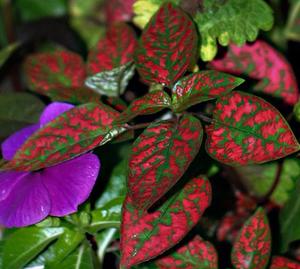 A flower transplant is carried out every spring. This is where transhipment takes place, rather than the standard relocation to another location. That is, they take a flower and put it in a larger pot. This improves the decorative qualities, rejuvenates it, the leaves look brighter. Younger specimens often look more attractive than older ones.
A flower transplant is carried out every spring. This is where transhipment takes place, rather than the standard relocation to another location. That is, they take a flower and put it in a larger pot. This improves the decorative qualities, rejuvenates it, the leaves look brighter. Younger specimens often look more attractive than older ones.
The soil must be chosen neutral in terms of acidity. It should be fertile, but light at the same time. Nutrients are required to keep the color of the leaves from fading. The substrate must have a certain composition. You can get a generic type for any indoor plant and add some orchid soil to it.
A mixture of peat, sand, compost and leafy soil in equal proportions is suitable. You can also take one part of sand, humus and peat for two parts of leafy land. All of these options are considered usable. When transferring, take a pot 3 cm larger than the previous one.
The container should be taken wide. It shouldn't be too deep. It is advisable to equip special drainage holes. The roots are located at the very surface of the substrate. That is why a deep pot will be superfluous here. It is advisable to take a more spacious container and plant several varieties of culture, combining them according to the color of the foliage. In this way, you will be able to get a bright mix.
It is important to sterilize the pot and drainage in advance, the role of which is played by fine gravel, expanded clay or gravel, soil. The pot is filled with expanded clay or foam, the height of which is 3 cm
Carefully take the plants out of the old pot, divide them into several parts, if necessary, to plant them, pull out the root system and remove damage if found.
The earthen lump is placed in the central part of the new container. Pour the substrate prepared in advance, shake the pot a little and lay the earth more densely. The entire volume is gradually filled with soil. You cannot leave emptiness. Water the plant, move it to a new location and spray. Moist air is necessary to improve adaptation to new conditions.
Common varieties
Hypoestes has a sufficient number of types. Most of them are not suitable for growing at home. The following varieties are most often planted on window sills in a pot.
Phylostach Hypoestes (leaf grate)
Phyllostach's hypoestes (hypoestes phyllostachya) thrive when planted in a house. This species is also known as foliar hypoesthesia. People call the flower a "freckled face" for the large number of specks on the leaves. The violet-red background color of the foliage, which looks very unusual, gives the plant a special decorative effect.

Hypoestes can be grown both at home and outdoors
Interesting. Leaf spikelet hypoestes can be grown with equal success on a windowsill and in a garden (in relatively mild climatic conditions).
Hypoestes Mix
Hypoestes Mix is also called "Confetti". It includes a large number of sub-varieties, including:
- Red crimson;
- White;
- Crimson;
- Red wine.
From the name of the variety, it becomes clear that the colors can be very different. Semi-lignified juicy stems and leaves with well-traced veins are typical for Mixes. The length of the foliage, depending on the subspecies and growing conditions, can vary from 8 to 10 cm.
Hypoestes pink
Hypoesthesia pink has another name - Rose Veil. This variety is considered to be fast growing and is often propagated from seeds at home. The foliage of this variety is characterized by the presence of a large number of pale pink spots on a bright green background. Since pink hypoesthesia is compact and rarely grows above 20 cm, it is often planted in apartments.
How to care for a hypoesthes plant at home
Difficulty of growing: low.
Optimal location: south exposure, grows best in a damp "green window". When taking care at home for the summer, it is recommended to take hypoesthesia to fresh air in a protected place.
Temperature: the plant does not tolerate temperature changes, does not like drafts. In winter, the room temperature should be at least 15 ° C. The optimum air temperature is 17-18 ° C.
Lighting requirements: light-loving plant, only with good lighting and a certain amount of direct sunlight, the color of the leaves will be bright. In partial shade, the leaves lose their variegated color and turn green. When caring for a flower, remember that hypoestes is sun-loving, but it must be protected from direct sunlight at noon.
Watering, spraying: the soil should be constantly moderately moist. For watering and spraying, use soft water at room temperature. Requires frequent spraying of the leaves.
The photo "Caring for hypoesthesia at home" shows all the main agricultural practices:
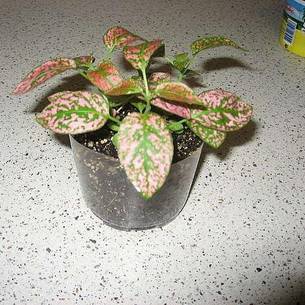
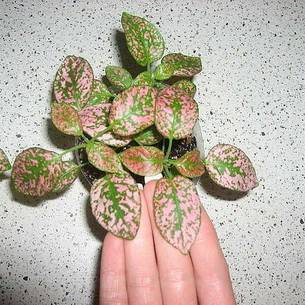
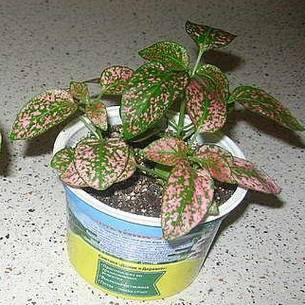
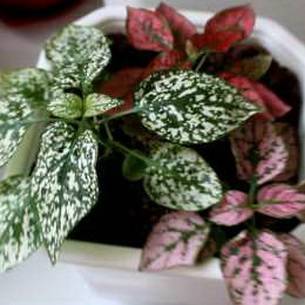
Top dressing: from May to September every 2 weeks with liquid complex fertilizer for indoor plants. For normal development and growth, a loose mixture of leaf and sod land with the addition of sand (1: 1: 1/3) is needed.
Rest period: after flowering, the plant begins a dormant period. It should be watered less often, spraying and fertilizing can be stopped until new shoots appear.
Transfer: hypoesthesia grows rather quickly, so every spring it needs to be transplanted into a larger pot. The potting mix should be light and loose.It can be prepared from two parts of leaf, two parts of turf and one part of sand.
As you can see in the photo, when caring for hypoesthesia, in order for the flower to grow branched, the ends of the shoots should be pinched every spring:
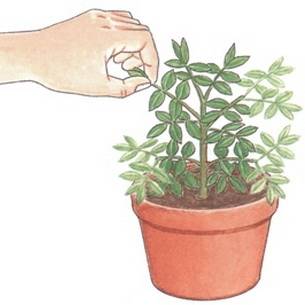

You can use a standard multipurpose dredge, but Indoor Jasmine primer works best.
Reproduction: hypoesthesis successfully propagates both by seeds and stem cuttings. Seeds should be sown in warm soil in spring. Cuttings for hypoesthesia propagation can be cut from the mother plant in spring or summer and placed in a container of water or wet sand for rooting.
Possible problems: blanching of the color of the leaves usually occurs due to a lack of illumination. In order for the shoots to branch better, they need to be pinched. Hypoestes is aging rapidly. Therefore, in the spring, when transplanting a bush that has lost its attractiveness, rejuvenating pruning is done. The flowers of hypoesthesia must be removed even in the buds, since after flowering the plant loses its decorative effect and soon dies. But if you want to renew the hypoesthesia, let the seeds ripen, and then, when they fall, they will easily germinate in the mother's pot.
Here you can see a photo of hypoesthesia flower care at home:

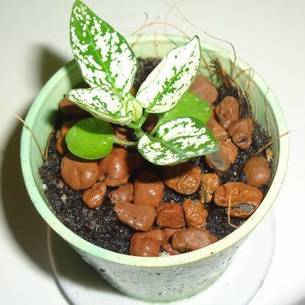
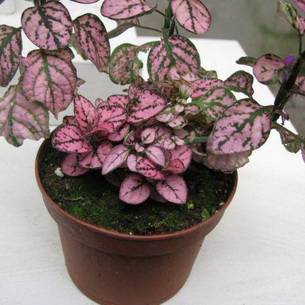
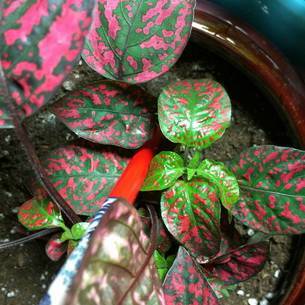
Basically, in their natural growth, they have a herbaceous or shrub form, with very good branching. In height, the plant rarely exceeds 50 cm. The stems are very juicy and hard, their growth rate is high.
The leaf plates are arranged in opposite order, ovoid in outline with a pointed apex. Their length reaches 7–10 cm and, moreover, at the base there is a smooth narrowing into a petiole. The edge of the leaf is smooth or serrated, the surface is covered with a patterned spot, which has a variety of outlines, sizes and sizes. The main background of the foliage is greenish or with a deep purple color scheme. There are specks and streaks of whitish, yellowish and pinkish tones along it.
Heads or semi-umbrellas are collected from flowers. The bracts of the hypestes are spliced and have a veil outline. 1–3 buds are located at their base. The corolla is tubular, and the bracts cover the calyx. The flowering process occurs in the summer-autumn period.
Planting and transplanting
Choosing a flower pot
When preparing for planting or transplanting, purchase a new container for the plant in advance. It should be medium in size, 1.5 cm larger than the previous one. Plastic is quite suitable, since the plants are not large in size and light pots will not tip over from the severity.
High containers must be discarded, moisture will remain in it for a long time, and hypoesthesia is useless. It is best to opt for short but wide pots. This is due to the fact that the root system of the plant is very delicate and superficial. You can also plant several plants in a wide container, which will create volume and an excellent composition of several species. And the pot must have a hole for draining excess liquid.
Best of all, hypoesthesia will feel like a shallow, wide bowl.
Soil for proper cultivation
Ground requirements:
- loose and light;
- with weak acidity;
- well permeable to air and moisture;
- nutritious.
A universal land for leafy indoor plants is quite suitable for such criteria. To make the substrate yourself, you will need:
- 2 pieces of leafy land;
- 1 part of humus; 1 part of coarse river sand;
- 1 part peat.
All components must be well chopped and mixed.
All components of the soil mixture must be well crushed and mixed.
Don't forget about drainage - it will ensure a good drainage of excess liquid from the soil. For small containers, it is best to use a shallow drain.
After buying hypoesthes, you need to keep it in quarantine for 2 weeks, separately from other plants. During this time, the flower will have time to adapt to new conditions. If everything is fine with the plant, then you can start transplanting.
Step-by-step transplant
- Pour a fine drainage on the bottom of the bowl, and cover it with a layer of substrate on top.
- Carefully remove the plant from the old container and lightly shake off the roots. You don't need to try hard so as not to damage the root system.
- Place the hypoesthesia in a new pot and add the remaining potting soil to the sides.
- Lightly squeeze the earth with your fingers, water it well, wait for excess moisture to drain out through the drainage holes and drain it.
- Place the transplanted plant in a bright and warm place out of direct sunlight.
Transplanted hypoestes are well watered and placed in a warm place, away from direct sun
Unlike other indoor plants, hypoesthesia needs an annual spring transplant, regardless of whether it is a young plant or an adult. You should know that in a plant the old age period begins already at 3 years, it loses its decorative effect - the lower leaves fall off, the stems stretch out and become bare. Therefore, it is recommended to replace the old plant with a young one every 2 - 3 years.
Room care
Hypoestes is able to survive even in unusual
conditions, which makes it easier to care for him. But for the bush to be lush and beautiful,
you need to take care of him correctly.
Illumination
Bright but diffused light is ideal lighting for
of this plant. Throughout the year, the duration of daylight hours should
be at least 10 hours. Make sure that the scorching rays of the sun do not fall on
foliage surface. In winter, the flower needs additional lighting.
Best suited for the bush are windows facing east and
west. On the southern windowsill, he needs shading from the direct rays of the sun, and
on the north - he may die from lack of light.
Temperature
It is a thermophilic plant that does well in spring and summer.
feels at temperatures from 22 to 26 degrees. On sultry days, don't forget
regularly moisten the flower with a sprayer. In autumn and winter, the temperature is
the room should not be lower than 17 degrees. Usually at this time they put it
not far from heating appliances.
Attention! Plant
reacts extremely negatively to both drafts and sudden fluctuations
temperatures
Air humidity level
Hypoestes grows well only in high humidity
air. Therefore, it must be moistened with a spray bottle 1-2 times a day, round
year, using rain or well-settled water for this. And also to
increase the humidity of the air, put the flower pot in a high pallet,
filled with wet expanded clay or sphagnum. Also, experts advise
regularly give him a warm shower.

Watering
This tropical visitor needs systematic abundant watering. In the warm season, it is carried out immediately after the top layer of the substrate has dried.
Since September, watering is gradually reduced, and in winter it is carried out only after a couple of days have passed after the surface of the soil mixture in the pot has dried.
Fertilizer
The bush is fed from the beginning of March until the second half
October. This is done once every 20-30 days, using a special fertilizer for
indoor ornamental deciduous plants, for example, Effekton DC or Agricola
for ornamental plants.
Transfer
The peculiarity of indoor hypoesthesia is that it quickly
loses its attractive appearance. Typically every 2-3 years
growers replace the old bush with a young one.
A suitable flower pot should be low and wide. Not
forget to lay a good drainage layer on its bottom. Soil mixture suitable for
cultivation of this culture should have an acidity of pH 5-6. Ready
universal substrate for variegated plants can be bought in the flower
store. You can also make it yourself:
- One part of peat, river sand, turf
soil and humus. - Two pieces of deciduous soil and one piece each
humus, river sand and peat.
Attention! To bush
was lush, he needs regular pinching of the tops of the stems
Hypoesthesia care at home
Hypoestes is considered one of the most hardy plants. But even he should be provided with suitable conditions and timely care.
Lighting
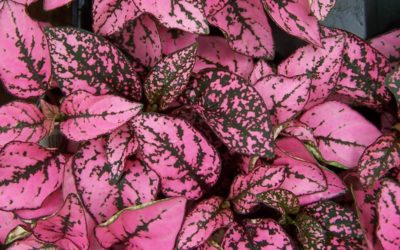 Hypoesthesia requires intense lighting, but exposure to direct sunlight is unacceptable.
Hypoesthesia requires intense lighting, but exposure to direct sunlight is unacceptable.
For hypoesthesia, intense diffused light is required. But scorching direct sunlight is unacceptable. Daylight hours should be about 10 hours.
In winter, the flower must be provided with additional lighting.
A good location for the plant would be an east or west window sill. If the windows face south, then it is better to place the flower near the window, where the curtain can protect it from the sun.
Hypoestes should be turned upside down once a week so that the leaves receive an even amount of light.
Temperature regime
In the spring-summer period, a comfortable temperature for hypoesthesia will be 22-26 ° C. To maintain its vitality, the flower should be sprayed frequently during the heat.
In the autumn-winter period, care should be taken that the temperature does not drop below 17 ° C. The flower does not tolerate temperature changes and drafts.
In winter, the flower must be placed near the heating devices.
Humidity

For spraying, it is better to take settled, filtered or rainwater.
Also, to maintain the required humidity level, the flower pot can be placed in a spacious pallet with moss or expanded clay.
The flower should also have a warm shower so that its leaves are saturated with moisture and the dust is washed off.
How to water?
Given that the tropics are home to hypoesthesia, constant watering is required. In the spring-summer period, watering should be abundant, but the outer soil layer should have time to dry out. In the autumn period, watering is reduced, and in winter, it is watered about once every 2 days after the soil dries out.
How to fertilize?
Fertilize hypoesthesia from early spring to mid-autumn once every 3-4 weeks. The fertilizer should contain a lot of potassium (affects the brightness of the color of the leaves) and little nitrogen (leads to loss of color).
Shop combined universal mixtures for decorative deciduous crops, they have a high potassium content, are well suited.
Suitable fertilizers:
- The drug Agricola for Ornamental Plants. Dissolve 1 teaspoon in 3 liters of water.
- "Effekton DC". Dilute 1 tablespoon in 3 liters of water.
Planting and transplanting
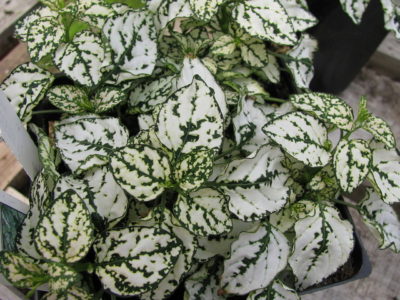
The pot should be chosen wide and with low walls. Drainage should be placed on the bottom. To make your bush lush, pinch the tops of the shoots. Then it will branch out.
Suitable earth mixes:
- Deciduous soil, river sand, humus and peat - 2: 1: 1: 1.
- Sod land, peat, humus and river sand - 1: 1: 1: 1.
- Commercial mix for variegated plants.
The acidity of the soil should be 5-6 pH.
Reproduction and cultivation
Reproduction of hypoesthesia occurs in two ways:
- cuttings;
- seeds.
Cuttings can be carried out throughout the year. The main condition is the presence of 2-3 nodes in the sprout. After that, the sprout is placed in water with added charcoal or planted in sandy-peat soil. Cover with a glass cover or foil. The temperature should be kept between 22-24 ° C. After 7 days, the shelter can be removed and transplanted into suitable pots.
From seed
The flower is propagated by seeds in March. For this you need:
- Take small greenhouses with nutritious soil.
- Sow the seeds to the surface, and lightly grind them with soil on top.
- Cover greenhouses with glass, plastic bag or plastic.
- For good germination, keep the temperature between 13-18 ° C.
- Arrange airing systematically.
Quickly emerging seedlings will look like adult plants in 3-4 months. Once the shoots are strong, they can be planted in suitable pots.
Pests and diseases
Hypoestes is rarely attacked by pests and is disease resistant.
The most dangerous pests for a flower:
- aphid;
- mealybug;
- spider mite.
After the plant blooms, the flower arrows must be cut and the fallen leaves must be removed so that they do not rot.
Flower hypoestes Home care Growing from seeds Propagation by cuttings
Hypoestes is an evergreen shrub from the Acanthus family, common in the tropics of South Africa, Madagascar, India, Costa Rica.
Translated from English, the name means "polka dot plant". Popular among indoor flowers, in some countries it is grown on the streets in flower beds.
This short bush has many branches. Leaves of various shapes: ovoid, with pointed tips, smooth or toothed, brightly colored, located opposite each other, rise on a succulent solid stem. Green leaves are covered with specks of different colors - white, red, pale pink. The tubular inflorescence covers the bract.
Location and temperature
Hypoestes is a native of southern countries, therefore, the brightness of the color of its main wealth, leaves, entirely depends on the illumination.
The best choice of a place for it will be the southern windows. Make sure that the scorching summer rays do not burn the leaves, shade the plant with a transparent curtain in hot weather.
In insufficient light, decorative spots will begin to fade, to the point that the leaves become completely monochromatic. It is useful to turn the pot once a week, exposing it in different directions to the light - this way it will develop evenly.
Large fluctuations in temperature in the room should not be allowed - hypoesthesia will not like this. The microclimate from +16 to + 19 ° С will become ideal for him. It is great if in the summer you can organize the plant free access to sunlight and fresh air - on an open balcony or in the garden.
Types of hypoesthesia with photos and names
Hypoestes Blood red Hypoestes sanguinolenta
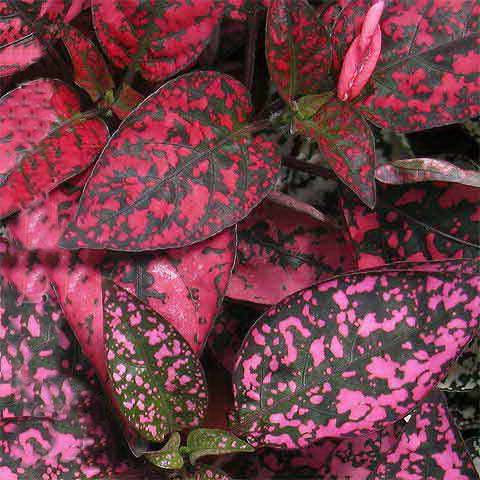
Hypoestes Blood red Hypoestes sanguinolenta photo
The most popular species found in the wild in Madagascar. It is an evergreen shrub, reaching half a meter in height, with dark green leaves covered with red specks and purple veins, the leaf shape is slightly wavy, ovoid. The flowers are small, light purple. This species has served to breed many popular varieties of hypoesthesia. The most popular are Splash and Confetti, reaching a height of about 30 cm. The varieties differ in a variety of fancy colors and will decorate any home.
Also bred pink varieties of this species:
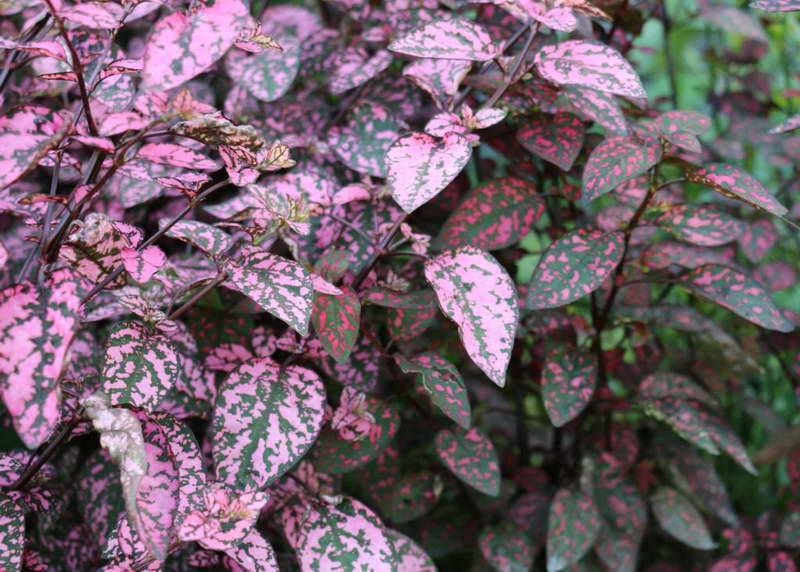
Hypoestes pink pink hypoestes sanguinolenta photo
Plants are often planted with a mix: red hypoestes, pink hypoestes and white hypoestes. It turns out to be a very effective composition.
Hypoestes phyllostachya Hypoestes phyllostachya
Hypoestes phyllostachya Hypoestes phyllostachya photo
Notable for purple-red leaves and single lavender blooms. There are varieties with white leaf colors.
Hypoestes white photo

